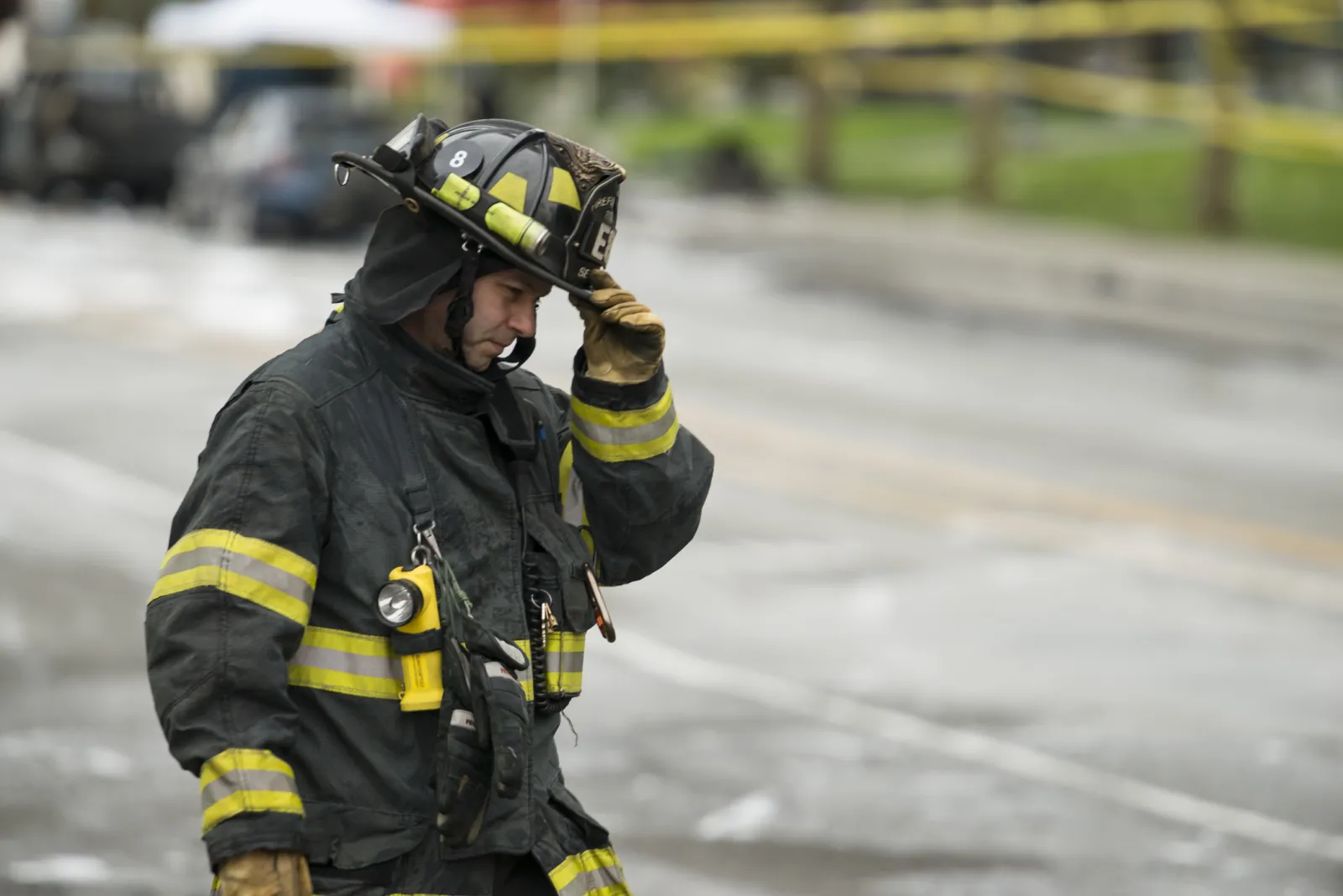A First Responder Gets Relief from Back Pain
Cal loves his job as a first responder and the fact that it allows him to serve others, but like a lot of people, he has been hard on his back over the years. Cal played high school football, basketball and baseball, played on the defensive line in college football and enjoyed many years of snow skiing that unfortunately resulted in him taking several bad falls.

In addition, Cal's job requires him to wear and carry heavy weight while working. This led to severe back and leg pain that ultimately was relieved with minimally-invasive spine surgery performed by Dr. Paul Jeffords of Resurgens Spine Center, a division of Resurgens Orthopaedics.
Beginning in the 1990s Cal experienced bouts of back pain, sometimes with radiation down his legs. This was aggravated by a car accident in 2016. He saw multiple specialists including a neurologist, and received treatment including physical therapy, chiropractic treatment, epidural steroid injections and radiofrequency ablations of the facet joints in his back. He would get temporary relief but his back pain eventually returned.
Then in 2020, during the pandemic, Cal had a series of events that led to back and leg pain that nothing would ease. Cal took a vacation with a long car drive to another state. While there, he experienced severe back pain that radiated into his leg and muscle spasms that took his breath away. He found himself waking up on vacation, being hunched over and he would have to ice his back to finally be able to walk upright.
Cal's pain affected every aspect of his life. He wasn't able to assist his wife with household activities, he wasn't able to work-out and he started to put off social activities with people because the pain was too bad. Seeing him in such pain, a co-worker referred him to see Dr. Paul Jeffords.
Dr. Jeffords stated: "When Cal came into the office, he had complaints of left lower back, buttock, and radiating leg pain that had been present for over five years but had worsened significantly in the month prior to his first visit. He failed to improve with long-term non-surgical treatments. His imaging showed three severely degenerated lumbar discs with herniations causing spinal stenosis and scoliosis with instability."
Cal was released to return to full duty work without any restrictions as a first responder at six months after surgery.
Dr. Jeffords reviewed Cal's MRI with him and recommended a minimally-invasive spinal fusion surgical procedure. After his visit with Dr. Jeffords, Cal called and spoke to his brother who coincidently had the same surgery performed at one level. After this discussion, Cal called Dr. Jeffords' office the same afternoon to schedule his surgery.
Dr. Jeffords continues: "Cal had a three-level minimally invasive spinal fusion called a "MIS TLIF". Two 1.5" incisions were made on either side of his lower back and a tube was used to remove the arthritic joints and degenerative discs at the lowest three levels of his spine in order to remove the pressure from the pinched nerves. Titanium fusion devices were used to replace the discs in order to stabilize and realign the bones, correcting the scoliosis and relieving the pain from the unstable discs."
Cal states that he could tell almost immediately that the pain he was experiencing before surgery was better and the pain he was feeling was from the surgical incision. The physical therapist got him out of bed the afternoon of surgery using a walker for safety. He was able to walk briefly down the hall and back to his room without any difficulty. The next morning the therapist returned to work with Cal and he did more walking and went up and down stairs. He also worked with an occupational therapist before he was discharged to ensure he could perform activities of daily living such as dressing, getting in and out of bed, suggestions for showering and using a gripper for picking up items from the floor.
Once at home, Cal was able to walk on a flat surface as much as his pain allowed and he did this several times a day. He also was able to go up and down stairs using caution and he found he was able to do so without difficulty. Cal followed Dr. Jeffords post-op instructions to a "T" because he didn't want to cause any damage to the surgical repair.
Dr. Jeffords continues: "at his first post-op visit two weeks after surgery, Cal stated that his radiating leg pain and numbness had fully resolved. He was having some lower back ache that he rated as being a 2 on a 0-10 scale". His post-op regime included beginning a physical therapy program for back strengthening three months after surgery. Cal was released to return to full duty work without any restrictions as a first responder at six months after surgery.
Cal is currently back at the job he loves as a first responder and we thank him for all he does for our communities. He is able to do all of his household activities, he is working out in the gym, and is doing his own yard work. His surgical procedure and physical therapy program have allowed him to participate once again in his personal and social life activities that the back and leg pain made impossible.
Dr. Jeffords has been performing the MIS TLIF technique for 15 years and says "for patients who are a candidate for the minimally-invasive spinal fusion versus the traditional "open" procedures they are able to take advantage of the potential benefits of smaller incisions, less tissue disruption, faster healing and less pain".